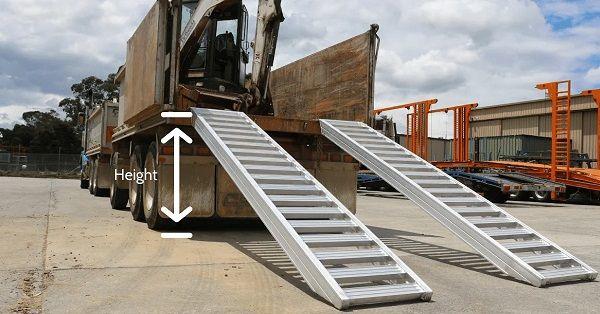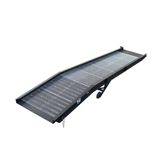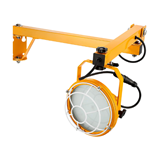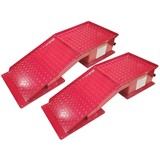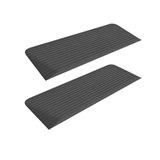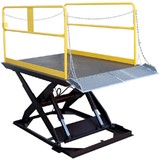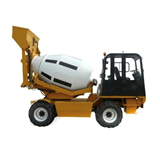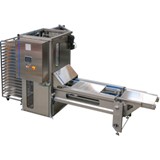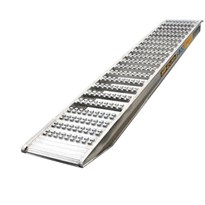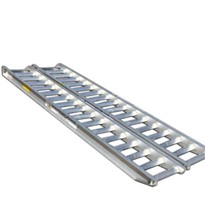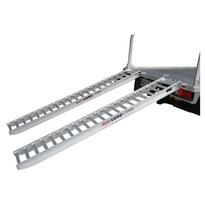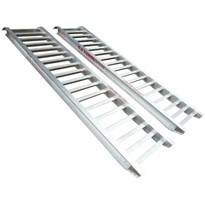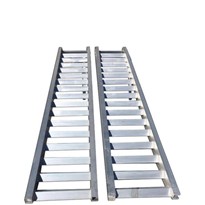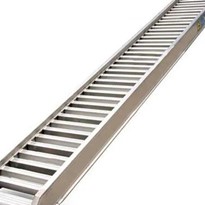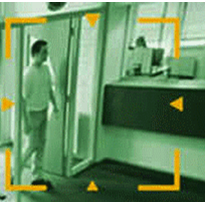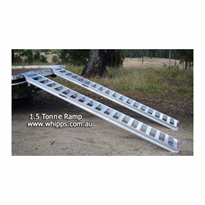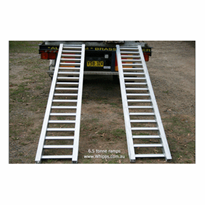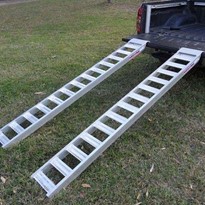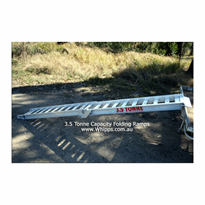But you head down to the local hardware store, only to find one measly option on the shelf. And you’re thinking to yourself, how do I know this will be a good fit for a 5 tonne excavator? The staff member wasn’t much help, either... A uni kid just after some beer money for the weekend (can’t blame them).
So you left without a straight-up answer to the question what size loading ramps do I need? Ugh.
Well, help is here.
We are Ramp Champ, Australia’s largest and best ramp retailer (‘scuse us while we brag for a minute).
At Ramp Champ, we focus on ramps and only ramps. Which means we have an unequalled level of experience and expertise.
In fact, our founder and CEO cut his teeth in the civil construction industry. So he knows the importance of loading heavy machinery with the right sized ramps.

To cut a long story short, you want a straight answer and we’re about to give it to you.
Read on to discover…
- What size loading ramps do I need?
- How to correctly measure your machine weight
- Why truck height matters (a lot)
- What other factors should you consider before you click “add to cart”
What Size Loading Ramps Do I Actually Need?"
The size of your loading ramps depends on three key factors: the height of your truck, the weight of your machine and the width of your tracks or tyres. Simple.
So, here’s the step-by-step process of helping you calculate all three.
Step 1: Measure The Height Of Your Truck
First up, grab a tape measure to take down the “rise” of your truck. Measure from the ground to your truck (at the point where you’ll be securing the ramps). By knowing the height of your truck, you’ll then be able to determine the ideal ramp length and avoid a gradient that’s too steep.

Enter your truck height into our ramp calculator, along with the length of the ramps you’re interested in.
It’ll then do the maths for you and spit out the gradient. We’re looking for something between 16 and 23 degrees. If the ramps you’re looking at are too steep, choose a longer set of ramps.
Keep going until you find the perfect gradient. Booyah.
Step 2: Calculate The Weight Of Your Machine
Time to dust off your operator’s manual and find the weight of your machinery.

But here’s the thing: the weight you find will most likely be the bare minimum (without all the bells and whistles). So, before you go and buy a set of loading ramps, you need to consider…
- The weight of any attachments you have, such as a bucket, grab, hammer, rake or auger. If you have multiple attachments you plan to carry up the ramps at once, add them all onto your machinery weight.
- The weight of your machine with any fluids (AKA the machine “wet weight”). This could include fuel, engine oil and hydraulic oil.
- The operator’s weight. Someone’s gotta drive the machinery up and down the ramps, right? So always include the weight of the heaviest person who operates your machinery.
- Anything else you plan on taking up and down the ramps. Do you have a lunch esky? Add it on. What about a grease gun, toolset or fire extinguisher? Add them on, too. If you don’t have the time to weigh each individual item, adding an extra 200kg to your machine weight should do the trick.
So there you have it, our simple formula:
Machine Wet Weight + Attachment Weight + Operator’s Weight + 200kg = Your Machinery Weight.
Step 3: Measure The Width Of Your Tracks Or Tyres
This one’s simple: grab a tape measure and record the width of your machinery tyres or tracks. Your ramps should be wider than this width to avoid sliding off (yikes).

If you have multiple machines, make sure the ramps are suited to the widest tyres or tracks.
Step 4: Find A Set Of Ramps That Ticks All Three Boxes
You’ve got your height. You’ve got your weight. You’ve got your width. Wasn’t so hard, was it?
Now, scroll through our large range of ramps to find ones that ticks all three boxes.

If you find you’re getting overwhelmed by all the options (we do have Australia’s largest range, after all) fill out this ramp form and a member of our team will respond with a set of loading ramps that’s right for you.
Other Things To Consider When Choosing Loading Ramps
Now we’re really getting into the nitty-gritty (because there’s more to loading ramps than the size).
Before you buy a set of ramps, go through the following checklist…
- Do they have secure attachment points?
- Having the ramps rest on your vehicle may be okay if you’re loading a lawnmower. But for heavy machinery, you need a locking system (like a connecting plate and pin) to keep your ramps as secure and stable as possible.
- What’s the rung type?
- Did you know your ramp's rung type should vary depending on whether you have steel or rubber tracks? Skipping this step could lead to a damaged set of ramps (and not to mention safety concerns). Find out the rung type before you hit buy.
- Do they have compliance plates?
- Check whether your ramps have compliance plates, recording the model number, load capacity and serial number. This is your official stamp of approval (and a place to refer back to if anything is not up to scratch).
- Are they certified?
- This isn’t a must-have. But if your ramps are certified (like our Heeve Loading Ramps, which are the highest international standards: EN ISO 12100:2010) that’ll give you an extra layer of security.
- Warranty
- Check whether your ramps are covered under manufacturers' warranty for added peace of mind. If not, run for the hills. Take note, damaged ramps that fall under misuse (like using the wrong rung type for your machine) will void the warranty.
- Delivery
- Do you enjoy the convenience of to-your-door delivery (particularly for bulky items like loading ramps)? Or would you prefer to visit a warehouse so you can physically touch the ramps? Whichever you prefer, choose a product that has that option.
- Material
- Aluminium is a lightweight yet heavy-duty material. The ideal combination. You want a pair of loading ramps that’ll be light enough to carry around (without breaking your back) while still being strong enough to support your machinery.
Take It From Us, The Largest Specialised Ramp Store In Australia
At Ramp Champ, we have an extensive range of high-quality ramps in one place. We’re not a jack-of-all-trades (and nor do we want to be). We’re a master of one, ramps.
So before you buy the generic one-size-fits-all option, remember that a safe set of loading ramps rests on three key factors: the height of your truck, the weight of your machinery and the width of your tracks or tyres. And once you’ve got that figured out, it’s time to weigh up other factors like rung type, attachment points and material.
Once you’ve taken down your machinery measurements and weight, fill out this form and a member of our team will recommend the best loading ramps for your situation. How easy is that?
If you have any questions along the way, we’re here to help.


